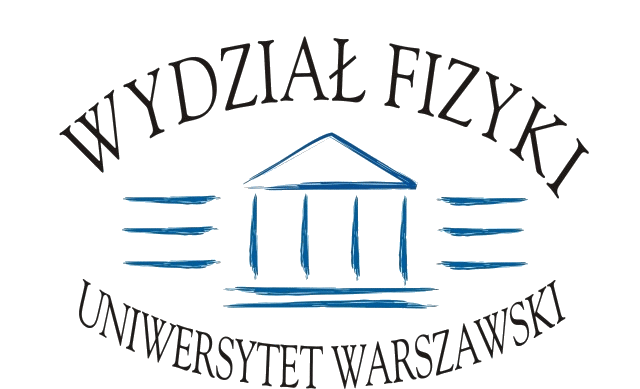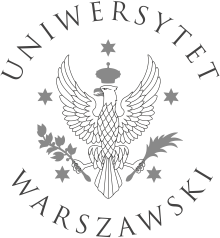Seminar of Theory of Relativity and Gravitation
2006/2007 | 2007/2008 | 2008/2009 | 2009/2010 | 2010/2011 | 2011/2012 | 2012/2013 | 2013/2014 | 2014/2015 | 2015/2016 | 2016/2017 | 2017/2018 | 2018/2019 | 2019/2020 | 2020/2021 | 2021/2022 | 2022/2023 | 2023/2024 | 2024/2025 | Seminar homepage
2025-06-13 (Friday)
Rafał Ćwiek (FUW)
Finding Green’s Functions Using the Laplace Transform
I will construct the retarded Green's function using the Laplace transform, first in Minkowski spacetime and then in the extended Rindler wedge. While the construction in Minkowski spacetime is fairly straightforward, the presence of a horizon in the extended Rindler wedge introduces several nontrivial features. In particular, solutions to the associated one-dimensional equation become non-smooth at the horizon, and extending them across it requires careful analysis. Interestingly, many of these features – especially those related to horizon crossing – can be visualized using spacetime diagrams.
2025-06-06 (Friday)
Mikołaj Korzyński (CFT)
Bi-local approach to geometrical optics in GR
The optical properties of spacetimes are often studied using null congruences, i.e. 2- or 3-parameter families of null geodesics. I will present in my talk a different, more general approach, based on the bi-local geodesic operators (or Jacobi propagators). I will focus on a number of interesting results you can obtain in a fairly simple way in the bi-local formalism, including an inequality between the parallax distance and angular diameter distance, valid in any spacetime satisfying the null energy condition.
2025-05-30 (Friday)
Jörg Frauendiener (University of Otago)
A global approach to the nonlinear perturbation of a black hole by gravitational waves
It is well known that gravitational waves interact in a non-linear way. This makes it difficult to describe them rigorously. The cleanest description is based on certain conformal properties of the Einstein equations — first discovered by R. Penrose, they were rigorously developed and used by H. Friedrich to prove several important global results for general relativistic space-times. The conformal field equations, which implement this conformal framework, provide various well-posed initial (boundary) value problems for use in many different situations. The talk will give a computational perspective on one particular application, the non-linear interaction of gravitational waves with an initially static (and spherically symmetric) black hole. We will show how to 'kick' the black hole and possibly how to spin it up.
2025-05-23 (Friday)
Alejandro Casallas Lagos (IFT UW)
The two faces of the gravitational wave signals: Insights from compact binary coalescence and core-collapse supernovae
Since the groundbreaking first detection of a gravitational wave (GW) by LIGO in September 2015, the field of GW astronomy has rapidly advanced. Improvements in the rate of confirmed events, the sensitivity and accuracy of GW interferometers, and the expansion of the LIGO-Virgo-KAGRA (LVK) detector network have opened unprecedented avenues for investigating diverse physical phenomena encoded in GW signals. In this talk, I will explore two distinct frontiers of GW signal characterization. Firstly, I will discuss methods to characterize the amplitude intensity of tensorial and non-tensorial polarization modes generated by binary systems during their inspiral phase, specifically within the framework of alternative theories of gravity. Secondly, I will present contemporary approaches to parameter estimation for GWs from core-collapse supernovae, focusing on how we decode information embedded in these burst signals using real LVK interferometric data and advanced machine learning techniques. Finally, I will highlight how these findings underscore the significant potential in our ongoing quest to detect and interpret gravitational wave signals.
2025-05-16 (Friday)
Ilkka Mäkinen (NCBJ)
Dynamics in quantum-reduced loop gravity
Quantum-reduced loop gravity is a model of loop quantum gravity, whose simplified kinematical structure makes it possible to explore practical applications which would be very challenging, if not completely intractable to analyze within the framework of the full theory. After giving a brief introduction to the quantum-reduced model and its relation with full loop quantum gravity, we present a proposal for a Hamiltonian constraint operator governing the dynamics of the model. In contrast to Thiemann's well-known construction of the Hamiltonian constraint in loop quantum gravity, the Lorentzian part of our Hamiltonian is given by an operator representing the scalar curvature of the spatial manifold. As a concrete physical application, we study the dynamics generated by the Hamiltonian in a cosmological setting, both at the level of semiclassical effective dynamics, and in terms of numerical simulations of the time evolution of quantum states describing homogeneous and isotropic spatial geometries.
2025-04-11 (Friday)
Jerzy Kowalski-Glikman (NCBJ and UWr)
The corner conjecture for Quantum Gravity
In my talk, I will begin by introducing the Universal Corner Algebra (UCA), a universal algebra of symmetries associated with corners (the boundaries of regions), within the context of classical General Relativity (GR). I will then argue that the UCA should play a role in Quantum Gravity similar to the role the Poincaré algebra plays in quantum field theory. Moving on to a two-dimensional example, I will explain how the UCA acquires a central extension in quantum theory and explore how the resulting representation theory of Quantum Corner Algebra (QCA) can be used to combine two regions into one. Additionally, I will demonstrate how these representations can be applied to compute the entanglement entropy of two regions and speculate on how this might be used to reconstruct the semiclassical spacetime. Finally, if time permits, I will briefly discuss the structure of QCA in 3 dimensions.
2025-04-04 (Friday)
no seminar
2025-03-28 (Friday)
Arman Taghavi-Chabert (Politechnika Łódzka)
Perturbations of Fefferman spaces over (almost) CR manifolds
In 1976, Charles Fefferman constructed, in a canonical way, a Lorentzian conformal structure on a circle bundle over a given strictly pseudoconvex Cauchy-Riemann (CR) manifolds of hypersurface type. It is also known, notably through the work of Sir Roger Penrose and his associates, and that of the Warsaw group led by Andrzej Trautman, that CR three-manifolds underlie Einstein Lorentzian four-manifolds whose Weyl tensors are said to be algebraically special. I will show how these two perspectives are related to each other, by presenting modifications of Fefferman’s original construction, where the conformal structure is "perturbed" by some semi-basic one-form, which encodes additional data on the CR three-manifold.Metrics in such a perturbed Fefferman conformal class whose Ricci tensor satisfies certain degeneracy conditions are only defined off sections of the Fefferman bundle, which may be viewed as "conformal infinity". The prescriptions on the Ricci tensor can then be reduced to differential constraints on the CR three-manifold in terms of a "complex density" and the CR data of the perturbation one-form. One such constraint turns out to arise from a non-linear, or gauged, analogue of a second-order differential operator on densities, closely related to so-called BGG operators. A solution thereof provides a criterion for the existence of a CR function and, under certain conditions, for CR embeddability. Our setup allows us to reinterpret previous works by Lewandowski, Nurowski, Tafel, Hill, and independently, by Mason.Time permitting, I will discuss the higher-dimensional story.This talk is based on arXiv:2303.07328 and arXiv:2309.16986. Broadcast in room 1.40
2025-03-21 (Friday)
Cong Zhang (BNU Beijing and FAU, Erlangen)
Black Holes and Covariance in Effective Quantum Gravity
The longstanding issue of general covariance in effective models of quantum gravity is addressed, which arises when canonical quantum gravity leads to a semiclassical model described by an effective Hamiltonian constraint. In the context of spherically symmetric models, general covariance is precisely formulated into a set of equations, leading to the necessary and sufficient conditions for ensuring covariance. With the aid of these conditions, we derive the equations for the effective Hamiltonian constraint. The equations yield two candidates for effective Hamiltonian constraints dependent on a quantum parameter. The resulting quantum modified black hole spacetimes are analyzed. Our models show improvement by casting off the known limitations of previous works with similar results.
2025-03-14 (Friday)
Tomasz Taylor (Northeastern University and IFT UW)
De S-matrix
I will construct the S-matrix describing elementary particles scattering in global de Sitter spacetime.






